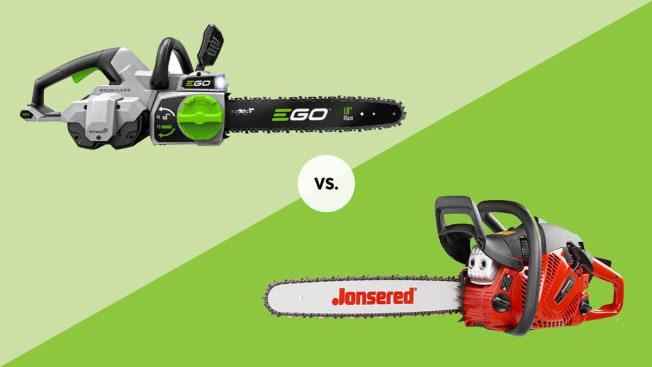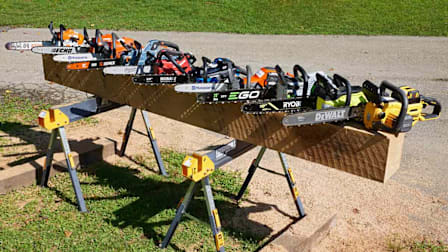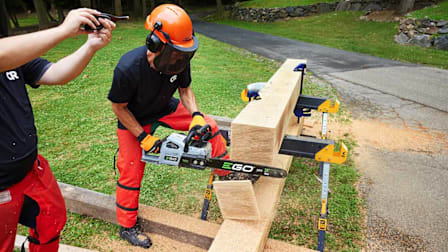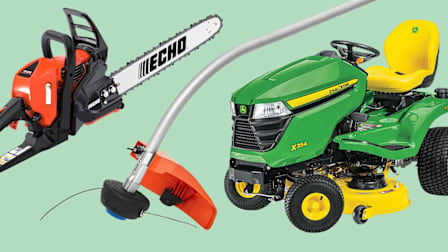Chainsaw Face-Off: Ego CS1804 vs. Jonsered CS2245
Can a battery-powered Ego hold its own against a gas-powered Jonsered?
When you shop through retailer links on our site, we may earn affiliate commissions. 100% of the fees we collect are used to support our nonprofit mission. Learn more.

Since the early days of electric yard tools, Ego has earned a reputation for making some of the best battery-powered options around. Jonsered, on the other hand, is a Swedish manufacturer of gas-powered tools—one that has been making premium chainsaws for almost 70 years.
Together these two brands embody a battle that has been unfolding in the aisles of home centers. Battery-powered tools, prized for effortless starting and minimal maintenance, have slowly but surely stolen market share from gas tools. But gas has retained a loyal following. After all, can a battery tool really match the power, and provide the run time, to tackle some of the toughest jobs in the yard?
Vitals
Jonsered CS2245 gas-powered chainsaw: The Jonsered is a premium gas chainsaw that has essential features but relatively few extras. It weighs 13 pounds and, like the Ego, has an 18-inch cutting bar that’s the sweet spot for a residential saw—anything smaller limits the size of tree or log you can cut, and anything larger can be tough to control for a typical user. It’s sold at independent outdoor power equipment dealers as well as at Menard’s.
Test by Test
Get the details on how the two chainsaws compare in the battery of performance tests we conduct at Consumer Reports.
Cutting speed: This test makes or breaks a chainsaw by determining how fast each tool can cut through a 10-inch-square oak beam. We use oak because it’s a notoriously hard wood to cut.
































